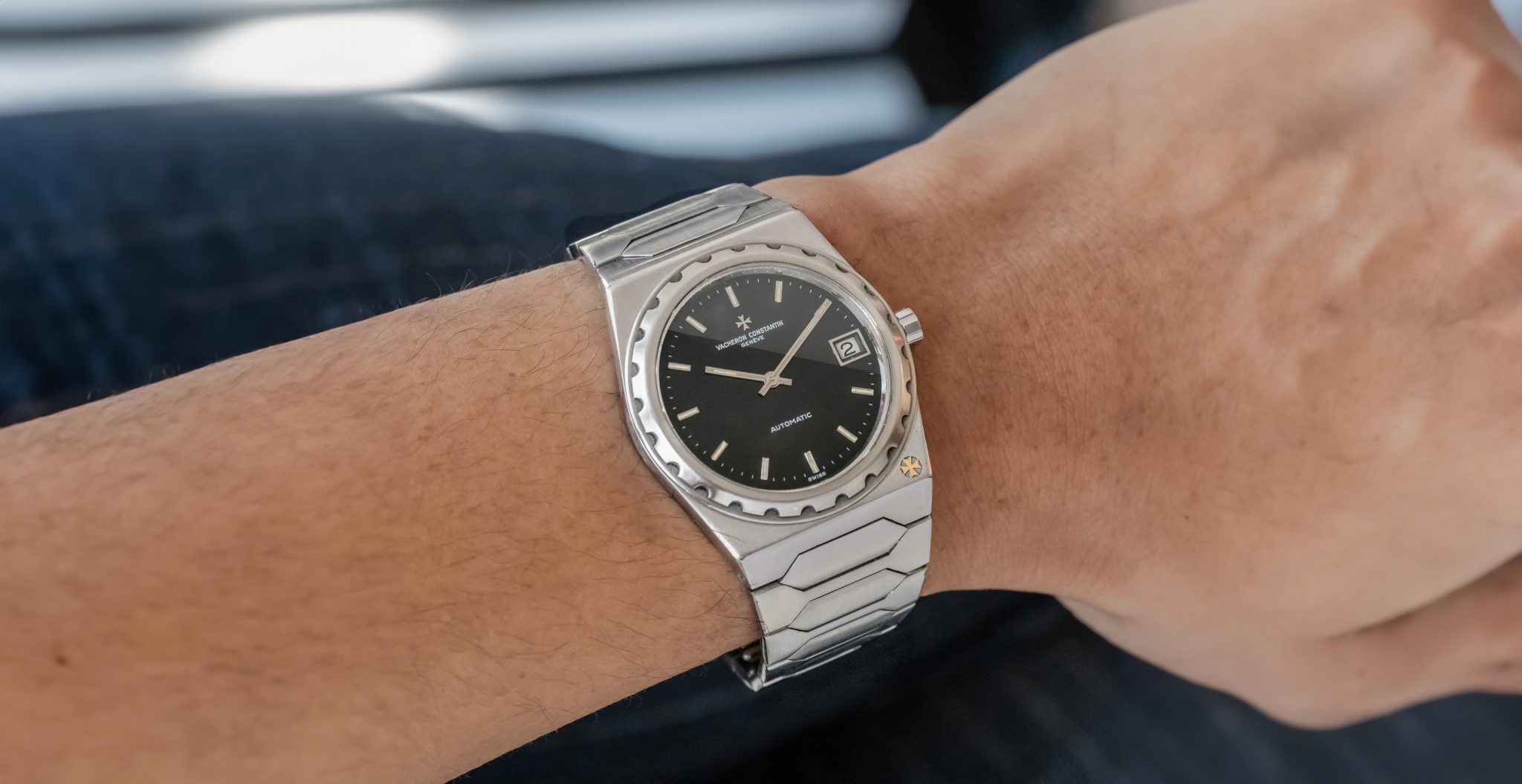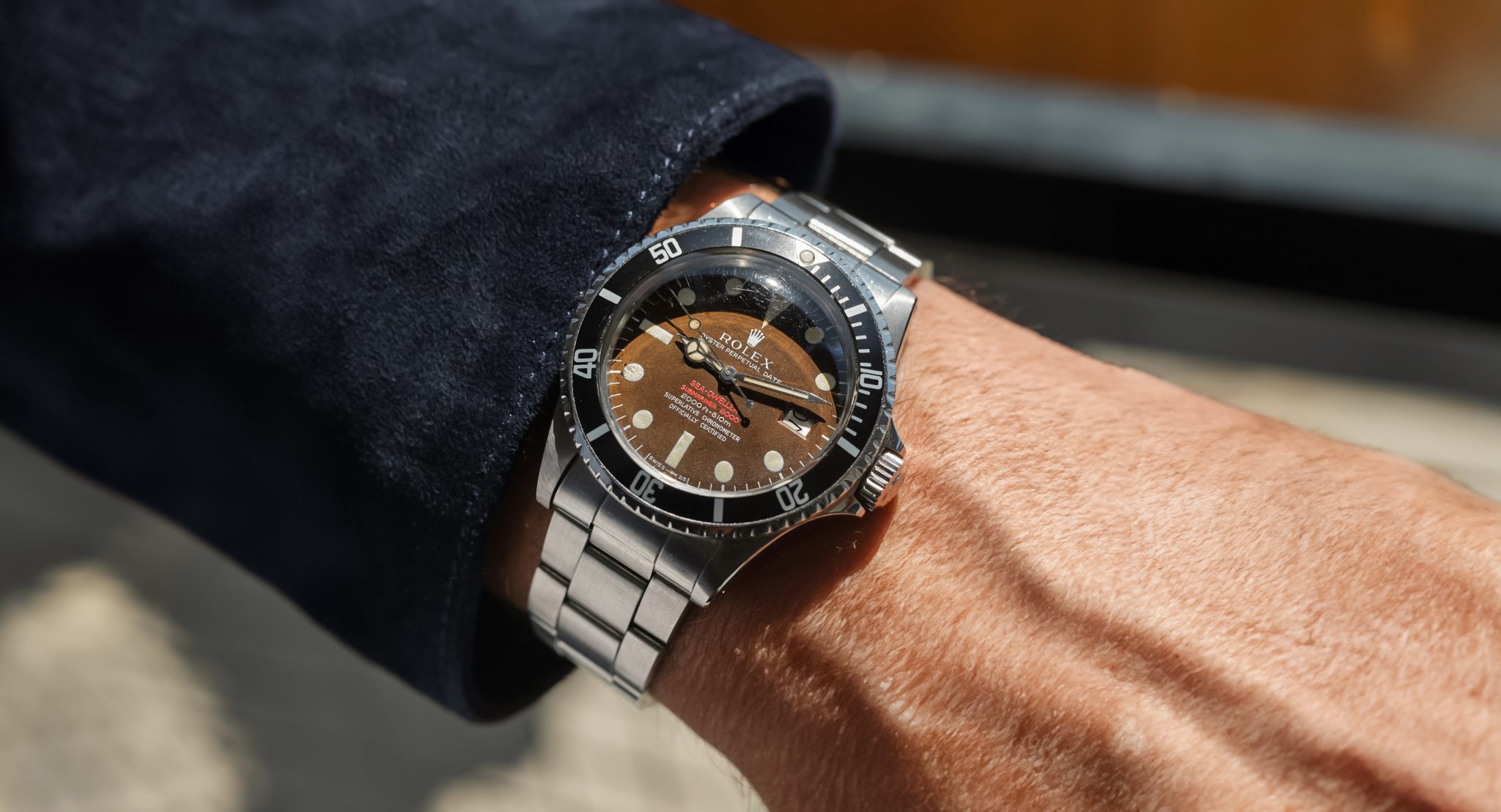
Mk2 ‘Freccione’ 1655 Rolex Explorer II
The 1655 isn’t just where the Explorer II began, it’s one of the strangest anachronisms in the Rolex back catalogue. By comparison to a GMT or Sub, it takes a very specific kind of collector: one that appreciates the start of a story to exclusion of all things. We usually think of the Explorer II today as an understated rival to the GMT, for its ability to quickly time a secondary time zone with a jumping hour hand. The 1655 predates the independently jumping hour hand (started with the 16550), which means the 24-hour hand and 12-hour hand are always synced. In effect, it tells the same one time as a 1016 Explorer, just louder, with more style, and twice. It’s a sort of Mick Jagger to the 1016’s Steven Tyler. This thing doesn’t make any sense today, well off the beaten path still, and because of that it’s sort of more charming than its GMT and Sub peers.
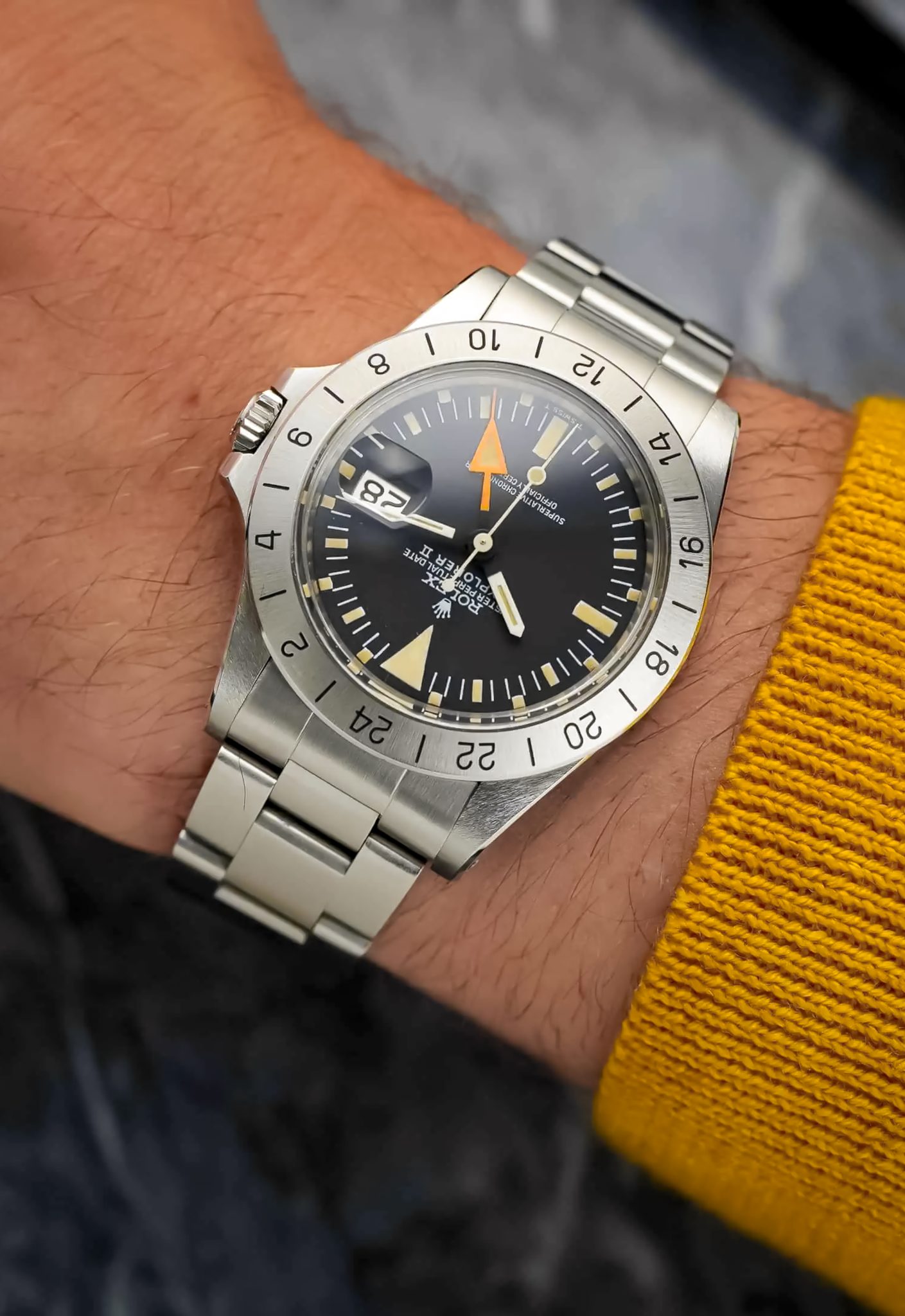
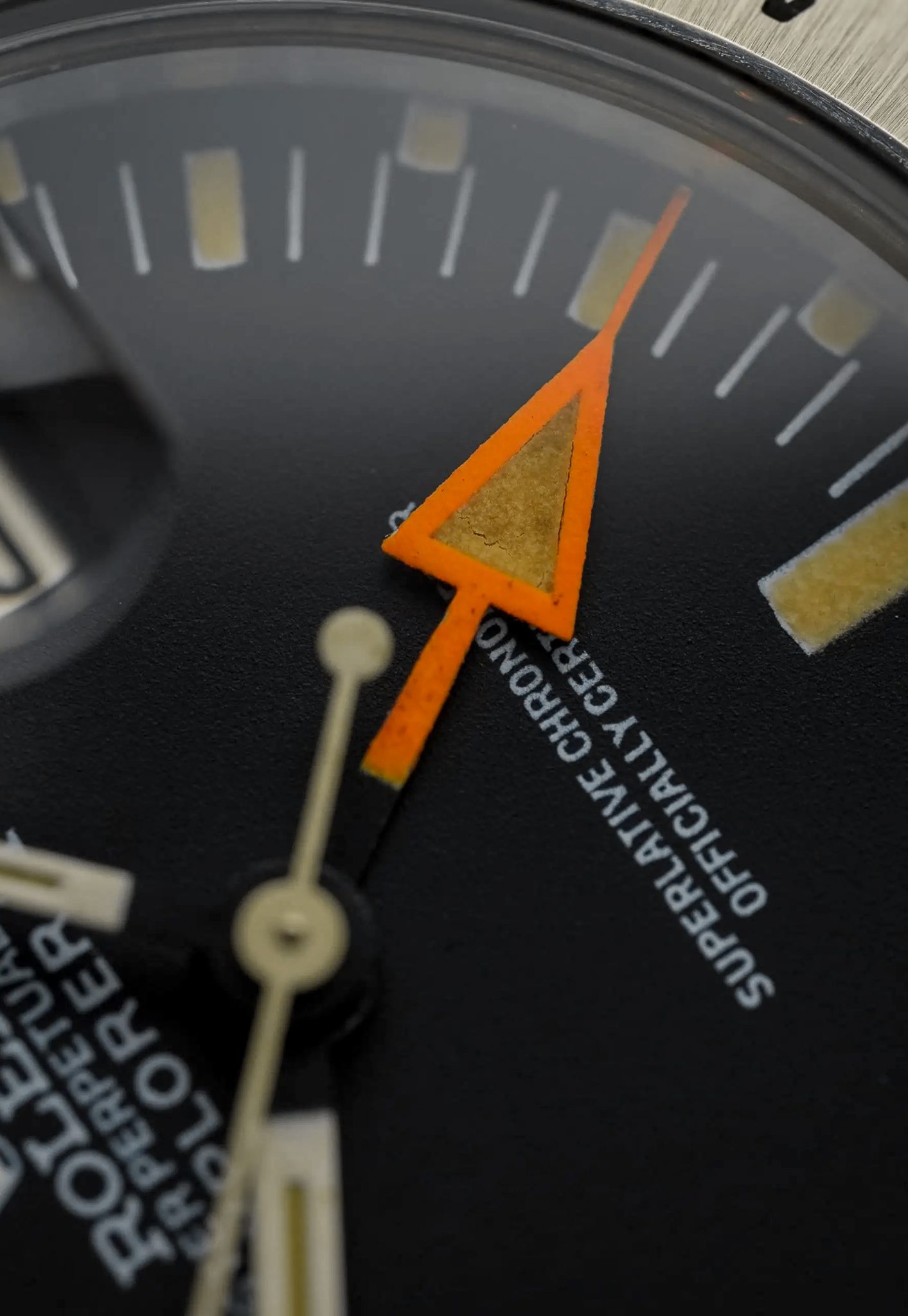
And no, we don’t call this the ‘Steve McQueen’ because he never wore one, the Italians just made it up, as they love to do. If you must have a name, use Anthony Kiedis (front man of the Red Hot Chili Peppers), Jason Statham, or Reinhold Messner, because all of those guys actually wore one. I quite like the sound of calling this the Statham. Think of the ‘Statham’ as a less functional Black Bay Pro, but one that isn’t as thick as Lizzo. There’s too much pop culture here already for my liking, let’s get down to business.
If you are to seek out a practical use case, the 1655 is probably the sole watch on Earth best distinguishing between AM and PM, thanks to its orange hour hand that gives it the ‘freccione’ nickname. The idea in 1971 was to create an Explorer for spelunkers and Arctic explorers, for use in places so far removed from life that it becomes difficult to distinguish between AM and PM through a fixed bezel that couldn’t accidentally be bumped. Much the same as the 6541 Milgauss for CERN scientists, Rolex didn’t seem to care very much that cave exploring was quite a niche market. The 1655 sold poorly in period, but is today appreciated for simply looking fantastic with its tritium and 24-hour bezel. And that’s enough. So much so that Rolex, Tudor, and even Longines, strangely, have decided to try their hand at reissuing it.
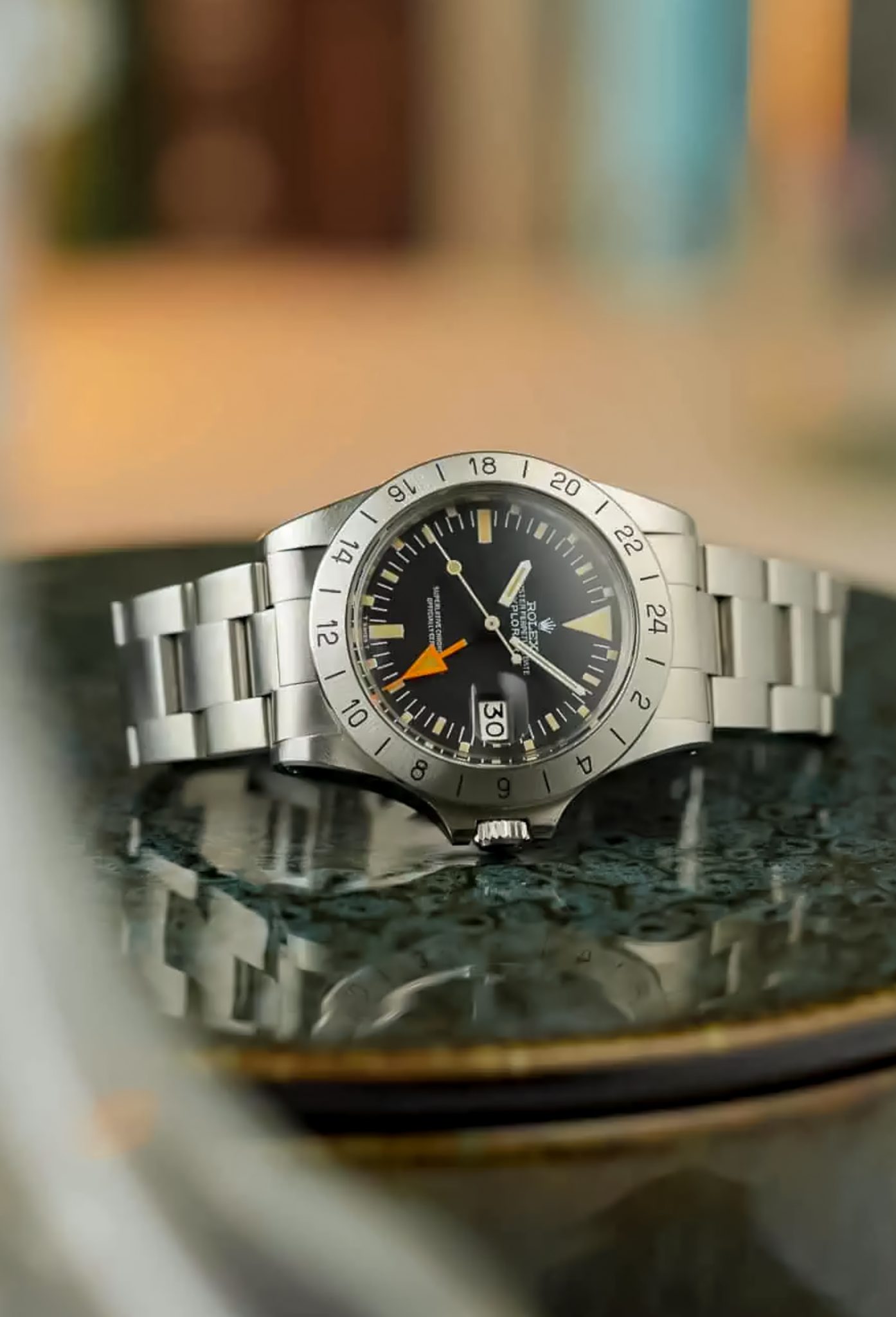
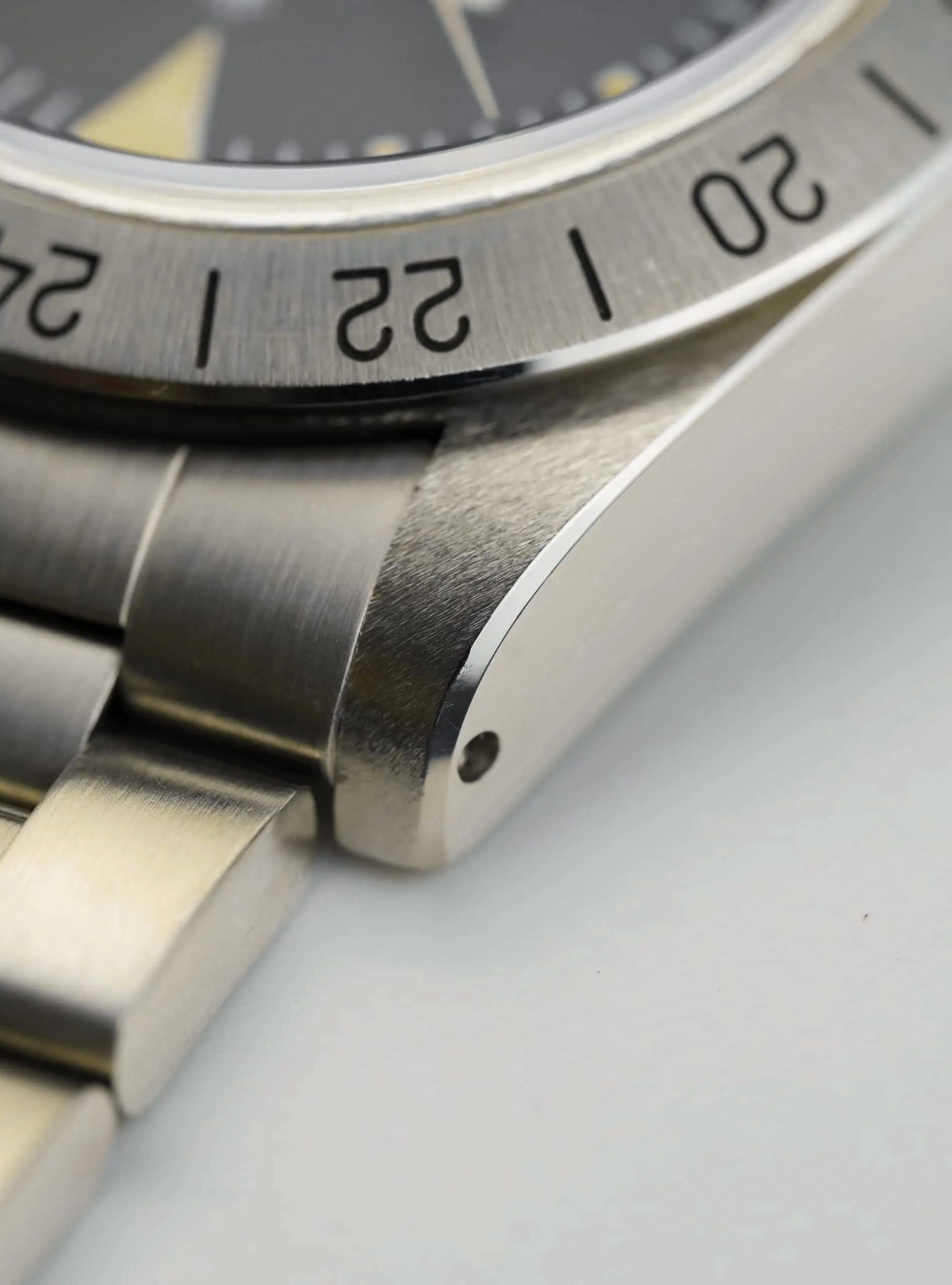
This example is a Mk2, with what collectors will call a ‘frog foot’ coronet for the way its points splay out. Rolex performed a touch up on this case in ’95, but it appears to have been extremely professional as the chamfers are still going very strong. Aesthetically, it’s an absolute winner. Practically, it’s one to be worn. The dial has a light cream tritium that oozes charm, all tritium in that big orange hand still intact too. Quite the attractive and strange anachronism, a great example. This one comes from a well-regarded German retailer.







